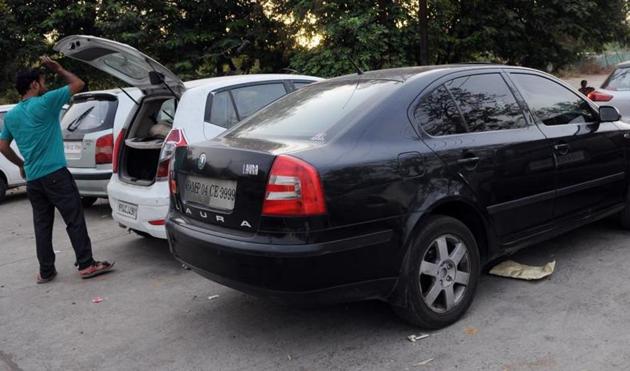The micro-challenges to the Make in India campaign
The story of a single industry, thriving globally but restricted in India, is a pointer
Last year, I was on a family holiday to the United States (US). As the heatwave raged across Texas, we took a break on the beach. We also decided to retrofit the car windows with tint. We found a dealer who showed us a selection of brands of tint films. “This one,” the dealer said, “is from India.” As we drove-off with the sun control on the glass surfaces, we felt proud of sporting a “Made in India” brand.

This month, I decided to start my car’s engine after two months of hibernation. On opening the car doors, I realised there was a strong toxic smell of burnt plastic, coming from the faux leather seat covers exposed in the harsh Delhi sun. Recognising the dire need for shade to cool down the cabin temperature, I decided to put sun control film on the glass surfaces in the car.
I googled for an appropriate dealer in Delhi and learnt that there is a complete ban on tinting of car windows and windscreens in India. I had been aware that the Indian Motor Vehicle Act had prescribed a standard for light transmission but not that tinting in the aftermarket was completely banned. I researched a bit. Why is this Indian product, available and doing well in the US, but banned in India? Which government entity banned it? When?
In that story lies a microcosm of the challenges faced by the Make in India initiative and boosting manufacturing in India. It also illustrates the challenges to Prime Minister Narendra Modi’s quest for a self-reliant India, which strongly relies on a thriving domestic industry which is local but acts globally, and is an integral part of global supply chains.
In a Public Interest Litigation (PIL) filed in 2012 at the Supreme Court (SC), a Kolkata-based petitioner prayed that in view of the rising crimes against women, carjacking and such, the black film should be banned. SC banned not only the black film but all films that could be applied to glass surfaces of vehicles. It’s acceptable if the tint in the vehicle’s glass came with the manufacture, which is as per Indian Standards. But the same luminosity, conforming to the Indian standards, is not permissible if the tint is achieved by adding a film. Overnight, the tint film application industry was declared illegal.
But the SC appears to have been misled. The PIL stated that tinting in the aftermarket is not allowed even in developed countries. It quoted the examples of the United Kingdom, Germany, and the US. This was quoted in the judgment. But the fact is that tinting, by externally affixing film, is allowed in most countries around the world, including the US; only, on account of the federal nature of the country, the permissible light transmission standards are different. The Indian brand I encountered in the US is recognised as a reputed brand in the international market in more than 80 countries.
Adding tint to automobile glasses in a hot country like India has its merits. The cabin heat of a parked car puts the engine under extreme stress as it takes the additional load of the air conditioning system for prolonged periods. Unlike in colder climates, radiation from direct sunlight and its reflection from the ground makes the cabin temperature unbearable.
As per a The Energy and Resources Institute report, tinting can save fuels worth a thousand crore as well as reduce Co2 consumption. We must remember that the factory-fitted tinted glass in vehicles comes at a very high price and most cars on Indian roads do not have that. It therefore has the potential to optimise energy resources and contribute to climate sustainability.
There are safety benefits as well. A crash may shatter the windscreen but the film will arrest shards of glass from flying. And most importantly, tinting, according to the International Window Film Association, can filter 98% of the harmful, cancer-causing ultraviolet rays.
While the order also relied heavily on the perception that having tinted glasses could undermine women’s safety, data on the automobile-related snatching of jewellery and purse, theft of computers from car cabins, humiliation, and harassment to women due to a lack of privacy makes for a strong case in the favour of tinted glass in India. In fact, violent crimes including rapes have taken place after identifying women as passengers in the car and dragging them out.
There are some broad lessons. When an industry grows, think carefully — and scientifically — about all elements associated with it before introducing restrictions, either through executive or judicial orders. When an industry is doing well globally, allow it to leverage domestic markets if it is not in violation of the law. Create an enabling environment for it. And only then will India become both self-reliant and a true manufacturing hub.
Sanjay Singh is former principal resident executive, Tata Sons
The views expressed are personal






